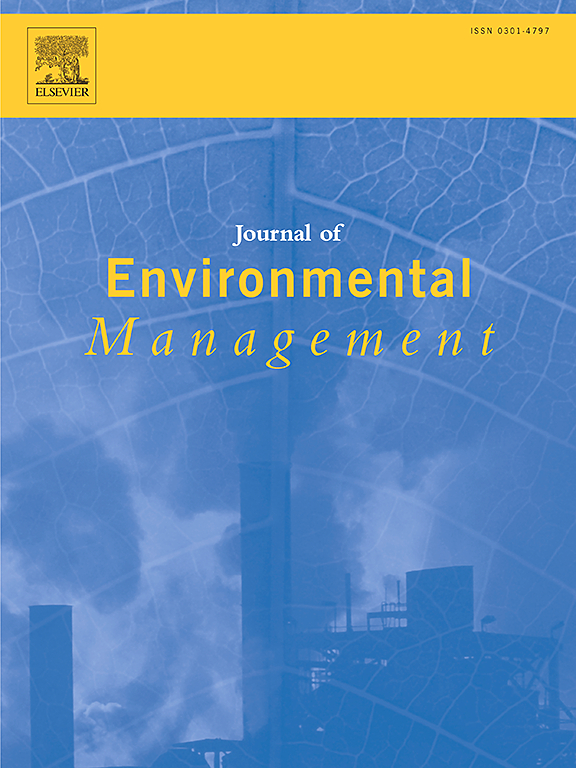绘制和评估立陶宛湖泊生态系统服务的未来供应。
IF 8
2区 环境科学与生态学
Q1 ENVIRONMENTAL SCIENCES
引用次数: 0
摘要
湖泊提供多种生态系统服务 (ES),是支持社会生态系统和人类福祉的关键。在未来土地利用和气候变化的背景下,必须预测对湖泊生态系统服务供应的潜在影响。因此,缺乏对未来湖泊生态系统的研究,如绘制地图。在这项工作中,我们绘制并评估了立陶宛三个 ES 的未来供应:(1)维持育苗条件(育苗 ES);(2)维持淡水的化学条件(营养调节 ES);(3)直接和间接的文化产出(娱乐 ES)。综合土地利用和气候变化,采用了四种未来情景:A0 - 一切照旧;A1 - 城市化;A2 - 土地放弃和植树造林;A3 - 农业集约化。预测年份为 2050 年,采用中间代表浓度途径(RCP 4.5)。未来情景模拟采用开源软件 Dinamica EGO,以 6 步建模框架为基础。采用 Kruskal-Wallis ANOVA 检验分析了不同情景和 ES 之间的统计差异。空间分析是通过进行莫兰 I 和 Getis-Ord (Gi∗) 热点分析完成的。结果显示,育苗和营养调节 ES 存在明显差异。A0 方案的育苗 ES 供应量最高。在养分调节 ES 方面,A1 方案的 ES 供应量最低,而在娱乐 ES 方面,A2 方案的 ES 供应量最高。立陶宛的东部和东北部地区显示出较高的 ES 供应量。仅在东部地区发现了热点地区。这些地区的森林和保护区覆盖面积较大。中部地区显示出较低的 ES 供应量,被确定为农业景观占主导地位的冷点地区。PCA 分析的结果表明,苗圃和娱乐 ES 之间存在关联。养分调节与其他两种生态系统没有关联。绘制和评估未来情景的影响对于预测湖泊生态系统服务的潜在动态至关重要,尤其是在气候变化的背景下。这些信息对环境管理至关重要,有助于决策者确保可持续的生态系统服务供应,并为人类福祉做出贡献。本文章由计算机程序翻译,如有差异,请以英文原文为准。
Mapping and assessing the future provision of lake ecosystem services in Lithuania
Lakes supply multiple ecosystem services (ES), key to supporting socio-ecologic systems and human well-being. In the context of future land use and climate changes, it is imperative to anticipate potential impacts on lake ES supply. Hence, studies that deal with future lake ES, such as mapping, are lacking. In this work, we mapped and assessed the future supply of three ES: (1) maintenance of nursery conditions (nursery ES), (2) maintenance of chemical conditions of freshwaters (nutrient regulation ES), and (3) direct and indirect cultural outputs (recreation ES) in Lithuania. Four future scenarios were utilised, integrating land use and climate changes: A0 - business as usual; A1-urbanisation; A2: land abandonment and afforestation; and A3 - agricultural intensification. The projected year was 2050, following the intermediate Representative Concentration Pathway (RCP 4.5). The future scenarios were simulated using the open-source software Dinamica EGO based on a 6-step modelling framework. Statistical differences among the scenarios and ES were analysed by applying a Kruskal-Wallis ANOVA test. Spatial analysis was done by performing a Moran's I and Getis-Ord (Gi∗) hotspot analysis. The results showed significant differences in nursery and nutrient regulation ES. The highest supply in nursery ES was observed for the A0 scenario. For nutrient regulation ES, the lowest ES supply was identified for the A1 scenario and for recreation ES, the highest was found in the A2 scenario. The eastern and northeastern regions of Lithuania showed a high ES supply. Hot spots were only identified in the eastern region. These regions are associated with a high area covered by forests and protected areas. The central region shows a low ES supply, identified as a cold spot where the agricultural landscape dominates. The results of the PCA analysis revealed an association between nursery and recreation ES. Nutrient regulation was not associated with the other two ES. Mapping and assessing the impact of future scenarios is vital to anticipating the potential dynamics of lake ES, especially in the context of climate change. This information is essential in the context of environmental management, helping decision-makers to ensure a sustainable ES supply and contributing to human wellbeing.
求助全文
通过发布文献求助,成功后即可免费获取论文全文。
去求助
来源期刊

Journal of Environmental Management
环境科学-环境科学
CiteScore
13.70
自引率
5.70%
发文量
2477
审稿时长
84 days
期刊介绍:
The Journal of Environmental Management is a journal for the publication of peer reviewed, original research for all aspects of management and the managed use of the environment, both natural and man-made.Critical review articles are also welcome; submission of these is strongly encouraged.
 求助内容:
求助内容: 应助结果提醒方式:
应助结果提醒方式:


